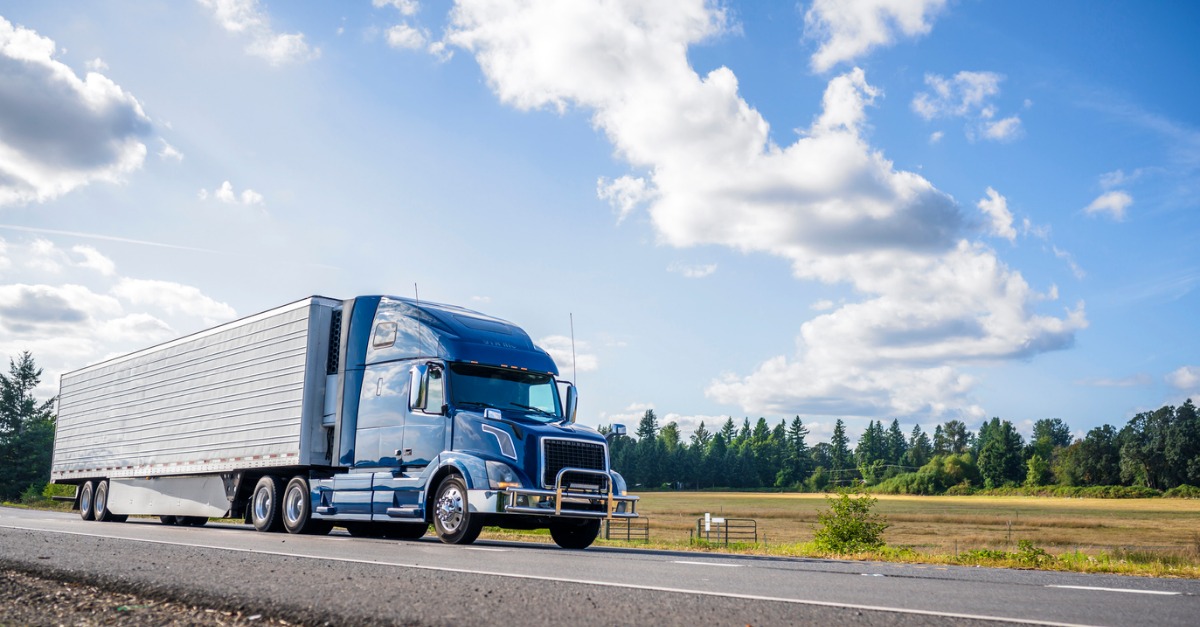
Truck drivers are essential to food distribution, but many food items can’t simply be loaded into a regular semi trailer to be hauled across the country. There are laws and regulations that dictate how to transport certain food items to avoid contamination and ensure customers are able to purchase goods that are safe to consume.
Why is food transported long distances?
Food transportation technology has greatly improved over the past few decades. And that has had a tremendous impact on the world. Now, even if your area isn’t suited to growing certain things, you can get things like strawberries and tomatoes any time of year. Fruits and vegetables are shipped all over the world every day. And produce that used to only be available seasonally is now available almost all year long.
The expansion of food distribution has also enabled many areas that were previously underserved to get food that wasn’t previously available to them. It also allows agricultural areas to focus on their strengths instead of having to grow things that aren’t necessarily suited to the climate or region because there isn’t any other way to get them. A farmer can focus his acreage on growing zucchini exclusively while knowing that the people in his town can still get things like corn and tomatoes. And the quality of those items will likely be better since they’re growing in a climate more suited to them.
Densely populated areas like Chicago, New York City, and Los Angeles don’t have enough space to dedicate to agriculture to feed all of the people who live there. Expanded food distribution is the only way for most of the people in those cities to get food at all.
Why is it important to deliver food on time?
Because many foods have a short lifespan, on-time delivery is critical. For example, fresh produce like tomatoes, bananas, and strawberries can over ripen quickly, even when stored in cool areas. Processed foods like milk and bread can also go bad if not delivered on time.
While logistical delays are sometimes inevitable, delaying food products should be avoided whenever possible. Aside from destroying the product by allowing it to expire or rot before it gets to its destination, preserving the quality of the items is also extremely important. And consumers can almost always tell immediately when a food item is substandard.
It is also important to mitigate delays on food deliveries because food is a necessity. Empty grocery store shelves can be inconvenient for many, but for those living paycheck to paycheck, having to go to multiple stores to find what they need to feed their families can cause a real hardship and even panic.
What kinds of foods need to be in a refrigerated truck?
Some of the foods that must be transported in refrigerated (or reefer) trucks are probably obvious. Frozen foods like pizza, frozen vegetables, ice cream, etc. definitely can’t be loaded onto a regular trailer. The same goes for butchered meat, dairy products, eggs, and things you would typically find in the deli section of your grocery store: hummus, salads, prepared cookie dough or biscuit dough, and many other items.
Some foods, particularly meat and dairy items, can attract harmful fungi and bacteria. Food contamination is a big health risk, so it is important to ensure that everything is kept clean and cold to inhibit bacterial growth. It is extremely important to meet safety standards, including the use of refrigerated trucks. Carriers can be held liable for food borne illnesses caused by improper transportation of foods.
What kind of trucks are best for transporting food?
It all depends on the type of food being transported. Below are the most common types of vehicles used to transport food across the country.
Regular Semi Trucks
Shelf-stable pantry items like cereal, pasta, canned foods, and baking mixes can be transported on regular tractor trailers since they don’t require any special refrigeration.
Tanker Trucks
Food-grade tanker trucks are used to move bulk ingredients like oil, corn syrup, fruit juice, and milk. They can also be used to haul bulk dry goods like flour and sugar.
Refrigerated Trucks
Perishable products, like eggs and dairy, are shipped on refrigerated trucks. Their heavier construction and refrigeration systems keep items at the optimal temperature throughout the journey.
Freezer Trucks
Things like ice cream, frozen pizza, and pie crusts can all be found on freezer trucks. These are kept below freezing at all times and have even thicker insulation on the doors and side walls than regular refrigerated trucks.
